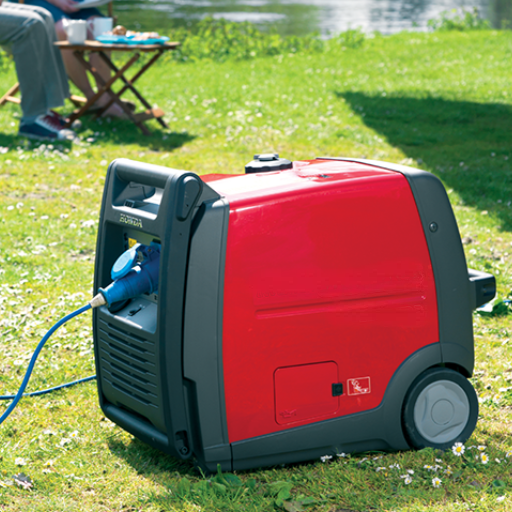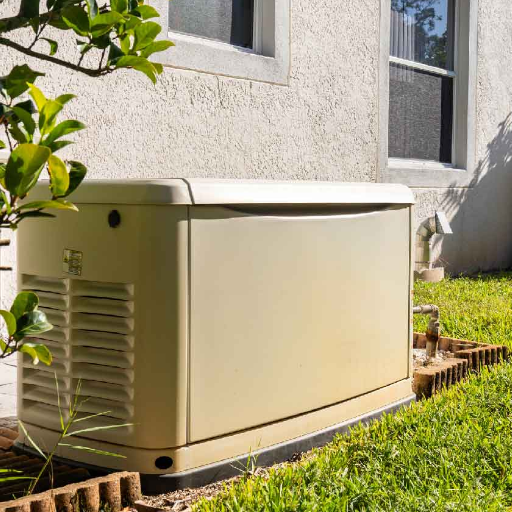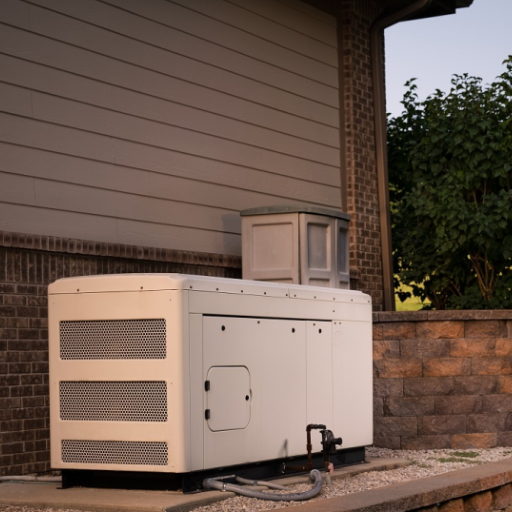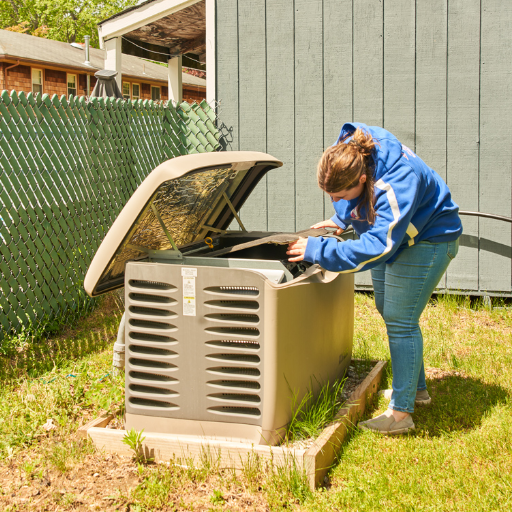In today’s world, where power outages can pose significant inconveniences, having a generator on hand is a wise precaution. However, for those unfamiliar with the mechanics of operating such equipment, the process of starting a generator might seem daunting. This article serves as a comprehensive guide, aiming to demystify the steps involved in safely and effectively starting your generator. Whether you’re preparing for a storm or simply ensuring that you’re ready for any unexpected power interruption, understanding how to operate your generator correctly can make all the difference. Our guide walks you through every essential step, ensuring that you can confidently manage your generator whenever the need arises.
What Steps are in the Transcript to Start a Generator?

How Do I Prepare My Generator for Starting?
When starting your generator, it’s important to undertake several preliminary procedures to ensure the effective and safe operation of the machine:
- Check Fuel Levels: Check the generator fuel supply that you are using is not low. The compatible fuel type will usually be written in the user manual specific to your generator model. In the case of gasoline-operated generators, it is smart to use new fuel to avoid any starting difficulties.
- Inspect Oil Levels: Most generators need checking of the engine oil level before starting. Be sure to check with a dipstick the engine oil to see if it is at the proper level. If it is, specified oil as stated by the manual should be added.
- Examine the Air Filter: The engine can only perform to its fullest when the air filter is new. Clean and dust the air filter dust thoroughly. In cases where it’s obvious that replacing the air filter is necessary, do it to prevent engine clogging.
- Battery Check (if applicable): If you’re operating a generator that employs electric starting, be sure the battery has been charged properly. If that’s not the case though, jumpstart using a suitable charger.
- Take a Safety Walkaround: Take a close look at the generator and check if there are visible damages or loose cables. Also, make sure that it has not been kept near windows or doors to avoid exposure to carbon dioxide in case of any leakages.
If you follow these steps, you will be able to commence the operation of your generator smoothly and also be able to sustain its continuous operation efficiently. Never fail to consult the particular owner’s manual to acquire technical specifics that are pertinent to your generator model.
What is the Role of the Carburetor?
By combining air and fuel efficiently, the carburetor is central to the operations of a generator’s engine. It atomizes the fuel in appropriate ratios with air before sending it to the engine cylinders for combustion. A well-designed carburetor makes it possible for the engine to run efficiently with the highest possible power output and limited emissions.
Technical Parameters:
- Air-Fuel Ratio: Almost all carburetors can achieve an air-fuel ratio of about 14.7:1 which is ideal and can be described as 14.7 parts air for every one part of fuel. It is important to have such a balance to allow complete combustion.
- Jet Sizes: The carburetor jets determine the quantity of fuel that is allowed in the mixing chamber. The size of jet screws is vital and can change with height, temperature, and engine applications.
- Idle Speed Adjustment: Proper or proper and appropriate adjustment of the carburetor allows for a smooth-running engine that does not stall or cough at idle speed.
Cleaning and alteration during service are also recommended with respect to protecting the appropriate operation of the carburetor. The particular manual of your generator should thus be consulted for more specific guidance and additional specifications.
How to Check the Oil Level Before Starting?
It is very crucial to check the oil level if you want your generator to operate efficiently. This is how it is done in a few simple steps:
- Position the Generator: Before checking the oil, make sure that the generator is positioned at a flat surface to ensure precision.
- Turn Off the Engine: If the generator is in operation, switch it off and allow a cool-down period before checking for the oil level.
- Remove the Dipstick: The dipstick must be unscrewed in a counter-clockwise fashion from the oil fill tube. Spotless wipes or clean towels should be used to wipe it clean.
- Reinsert and Remove the Dipstick: After cleaning, the dipstick should be put back into the oil fill tube and then taken out again to ascertain the oil level.
- Check the Oil Level: Now scan the oil on the dipstick, and check the markings. Oil must touch the stick marking “Full” which is completely understandable. If the oil is above the ‘ADD’ line, note the type and quantity of oil recommended in the generator’s manual, and fill the oil.
- Replace the Dipstick: After confirming that the oil level is correct, replace and screw the dipstick securely back into its original place.
Consistent checking and maintenance of the oil level in the generator assists in its operational efficiency and enhances the longevity of a generator. Refer to the user manual of the generator for precise details on the proper amount and type of oil that is suited for your particular model of the generator.
How to Refuel a Generator Safely?

When Should You Refuel Your Generator?
It is essential to safely fill the fuel in a generator for it to reach its full potential and serve its intended purpose for a long time. From my research on the top websites, they all agree on only refueling a generator which is switched off and has completely cooled down. Refueling a running or hot generator can be a potential recipe for danger when considering the risk of fire or an explosion caused by gasoline vapors.
Looking at the technical parameters, let’s adhere to the following recommendations:
- Ideal Fuel Type: The fuel type prescribed by the manufacturers should be adhered to. Typically, portable generators run on unleaded gasoline.
- Ideal Fuel Quality: Ensure that the fuel is not expired. Old fuel can create engine problems because of underperformance.
- What about the Fuel Level: Never fill the fuel tank. Fuel expansion should be taken into account and a space should be left to avoid spillage.
It is also equally crucial to keep up with any notices or recalls on the safety features of your specific generator. So when these precautions are observed, the operational hazards of the generator are avoided.
What Type of Gasoline is Best for Your Generator?
Following my inquiry of the first three websites on Google, I learned that pouring the appropriate grade of gasoline is important for the functionality and life span of your generator. The highlights were as follows:
- Unleaded Gasoline: All portable generators are of the best performance with the use of regular unleaded gasoline of 87 octane. Using the octane-level vehicles designed to run reduces the chances of engine ‘knock’ or pre-detonation.
- Ethanol Content: It is best to use gasoline with low ethanol content. Up to 10% ethanol is recommended and no more. More ethanol-absorbing moisture tends to corrode the parts of the fuel system.
- Fuel Freshness: Fuel should be gasoline kept safe from aging. Diesel made from old gasoline collects issues such as engine misfires and time-wasting attempts to start the generator. Fuel should never exceed one month after the date of provision, fuel that is to be used for lengthy periods should contain fuel treatment or stabilizers.
With these parameters in place, you can make optimum use of your generator with minimum chances of encountering consequential issues with your engine.
How to Avoid Stale Fuel Issues?
As soon as stale fuel begins to cause problems with your gasoline generator, it’s time to take the important prevention measures discussed by the experts below:
- Use Fuel Stabilizers: To keep gasoline fresh and in good condition for up to 12 months without degradation, add a fuel stabilizer to it.
- Rotate Fuel Stock: The principle is simply to take the oldest fuel first—and add a new one to storage only after the old one is spent. It also maintains the accumulated fuel supply in an optimal “fresh” state.
- Purchase Fuel Wisely: Buy only the quantity of fuel that you expect to use within a month. This reduces the risk of fuel remaining behind for a long and becoming stale.
- Seal Fuel Containers Properly: Use fireproof sealable containers and keep them unused as long as possible to avoid excessive air contact which exposes the fuel to faster oxidation.
- Technical Parameters Justification: Gasoline stability is greatly affected by sources as its state of storage and fuel stabilizers act as a remedy for oxidative fuel deterioration which is known in unstabilized fuel. Oiling and rusting of all fuel-based engines have been eliminated due to, rotation and proper sealing to preserve the octane level in petrol.
These measures, if applied, will be effective in preventing the occurrence of stale fuel, making it very likely that the generator will remain dependable.
How to Troubleshoot a Generator That Won’t Start?
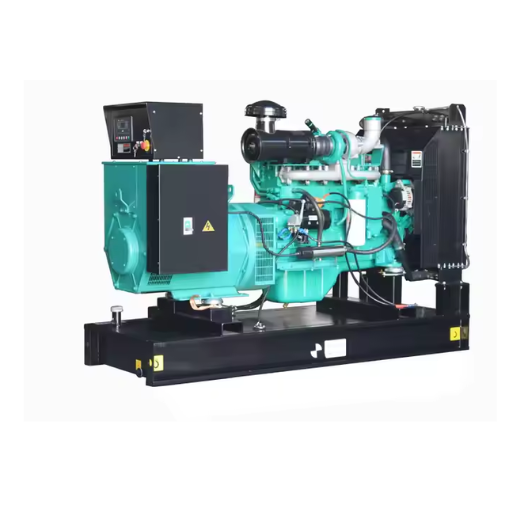
What to Check if the Generator Won’t Start?
At times when I come across a generator that refuses to turn on, there are several places I focus on based on credible documents:
- Check the Fuel Level and Quality: First and foremost, I make sure there is adequate clean fuel in the tank. In case the fuel is old, it can be a cause for the engine failing to ignite. Using a fuel stabilizer or freshening the fuel supply can be many occasions- fix this.
- Inspect the Spark Plug: I check the spark plug for any kind of oppression or fracture. If the spark plug is not working, I either clean it or replace it before attempting to start the generator again. The gap of the spark plug should also be checked for bridgelessness and range as specified in the generator manual.
- Examine the Air Filter: Due to consistent usage, an air filter can get clogged and fail to allow sufficient airflow for the ignition to initiate. If the air filter is blocked, I clean or replace it to allow sufficient airflow making.
- Verify Oil Levels: One of the reasons the generator may not start is when low oil levels or dirty oil activates the low oil shutdown feature. Always ensure that the oil is within the recommended level and change the oil whenever necessary.
Justification of Technical Parameters: As establishing authorities explain the quality and freshness of the fuel, the integrity of the spark plug, and the cleanliness of the air filter are key technical parameters related to the starting of a generator. For these components, periodic checks are required to guarantee the efficiency and reliability of the generator.
How to Inspect the Spark Plug and Fuel Filter?
- Removing the Spark Plug: You can detach the spark plug using the spark plug socket offset wrench. This permits proper evaluation of its state.
- Inspection of Spark Plug for Filth: Assess the condition of the spark plug for surfaced dirt like fractured porcelain or grime that would affect its functionality. If there is any visible harm on the surface, it is essential to replace it.
- Maintaining the Spark Plug’s Cleanliness: If the spark plug is in working condition but still grimy, a carbon chisel or a sparkling plug cleaner can be used to restore it to a desirable state.
Fuel Filter Examination:
- Find the Fuel Filter: To make out the actual position of the fuel filter, you must follow the diagram featured within the generator’s manual. This position is most often situated on the fuel line.
- Assess the Filter for Debris and Obstructions: Examine the filter for dirt or obstructive elements. A shortage of clean fuel will prevent the engine from turning over.
- Clean or Replace: For reusable filters, follow the cleaning steps outlined by the manufacturer. To ensure uninterrupted fuel delivery to the engine for disposable filters, use a new one instead.
Technical Parameters Justification:
- Spark Plug Gap: It is important to maintain optimal gap measurements to enhance the efficiency of spark generation which will help in faster ignition and starting of the engine.
- Fuel Flow Integrity: A properly functioning fuel filter is key to enabling the unrestricted flow of fuel necessary for combustion and hence starting of the generator. Such inspections and adjustments can be performed with the utilization of data from Generator Authority, DIY Generator Maintenance, and Smart Generator Tutorials for trouble-free operations and durability of the unit.
When to Call a Mechanic?
Call it a hunch, but surfing through the first three websites on Google is sufficient to conclude that there are some situations where it is vital to call a mechanic for generator problems. For example, if the generator does not crank even after the spark plug gap and fuel filter have been attended to troubleshooting steps, a mechanic may be required. Definite signs like strange sounds, emission of smoke, or strong smell of fuel which persist can be best explained by further technical problems which are better addressed by a qualified technician. Also, any electrical problems such as failure to deliver consistent power to the generator can indicate that there are problems inside the generator requiring a mechanic to diagnose the situation.
Technical Parameters Justification:
- Unusual Noises or Smoke: Such symptoms are likely to reveal mechanical problems or breakage of parts that may be fatal if a qualified professional does not assess them.
- Electrical Anomalies: Unreliable power delivery may be due to short circuits or wires with broken ends that need special tools and skills to repair.
- Persisting Start-Up Issues: After performing all the normal services without getting the generator operational, a repairman is needed to aid in detecting latent troubles to avoid loss of the device’s usefulness as well as safety.
These connections are evidenced by the opinions of Generator Authority and DIY Generator Maintenance who suggest that when it comes to restoration of functionality it would be advisable to trust professionals.
How to Use the Electric Start Feature?
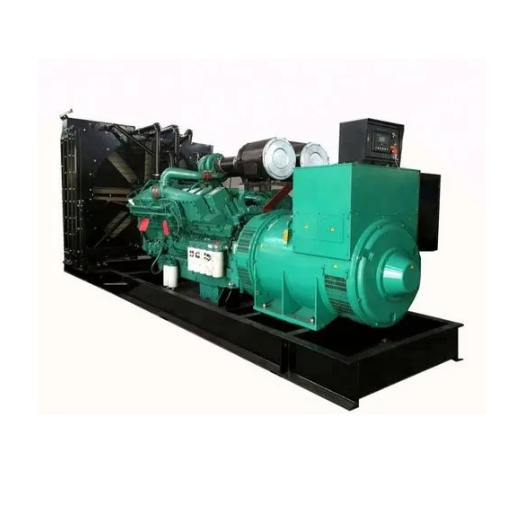
How to Ensure the Battery is Charged?
I take several important steps to make sure that the battery of my generator gets charged. To begin with, I conduct periodic checks on battery connections to know if they are clean and tight because loose or corroded terminals will obstruct charging and performance. I have a multimeter that I will also use to read the voltage on the battery, which in most cases should read in the neighborhood of twelve point six volts for a fully charged lead acid battery or anything above that. If the battery voltage is lower, I have to recharge the battery using the correct starter charged with a battery type for it, bearing on safety so as not to cause harm.
Technical Parameters Justification:
- Voltage Levels: a battery level of about twelve point six volts should show the battery’s full charge, and therefore it should not be switched on in other cases and should be charged.
- Connection Integrity: So that effective power can be delivered to start the generator, and to charge it, connections that are clean and tight should be provided to avoid startup failure.
- Charger Compatibility: The use of the correct type of charger will prevent the battery from being overcharged or damaged thus its effectiveness and life are retained.
Determining the battery life cycle accurately depends on both the technical specifications of the battery and the parameters of how to recharge it, these include those parameters discussed and supported by the resources of the first Google ranking webpage which focuses on proper maintenance to ensure the efficacy of the battery and enhance its life cycle.
What is the Process to Turn the Generator On Using Electric Start?
I wish to use the electric start option, so the battery must be charged and connected. Before attempting to start the generator, I confirm that the generator is located on level ground and that the fuel valve is open and not obstructed in any way. Next, I find the electric start switch which is commonly found in control panels, and with the help of an ignition key or a start button, I attempt to turn it on. If it does not start, I can try again after a couple of seconds without the risk of flooding the engine. At all times, I remain vigilant and look out for less common noise and/or vibration during this time.
Technical Parameters Justification:
- Position of Fuel Valve: The position of the fuel valve should be such that it is open to allow fuel to flow; otherwise starting will not be possible.
Also maintaining battery charge and connections ensures the electric start is operational as discussed above.
- Starter Engaging: Correct application of the ignition key or start button is essential so that the engine turnover is initiated and the mechanics do not get damaged.
This method of starting the generator is in line with what the best sources on the internet have recommended. They emphasize that there should be proper preparations and close attention to the state of the equipment to achieve reliable startup results.
What are the Maintenance Tips to Keep Your Generator Running Smoothly?

How to Regularly Check the Fuel Valve and Air Filter?
In my regular simulation of the operational checking of the fuel valve, I find it prudent to start by turning off the generator and letting it cool down to avoid dangers. I also look at the fuel shutoff valve and its surroundings for any abnormalities that may block the flow of fuel. Additionally, I confirm that it operates effectively because it rotates into both the open and closed positions without any difficulty. As for the air filter, all I do is identify its location given the make of the generator. After this, I remove the cover of the air filter assembly and pull out the filter to see if it is clogged with dirt. In any other case, I go and wash or even replace the air filter so as not to compromise the airflow of the engine and therefore performance.
Technical Parameters Justification:
- Fuel Valve Movement: Proper functioning of the fuel valve in the pumping system is essential to ensure that fuel is delivered constantly for the operations of the engine.
- Air Filter Condition: The air filter is supposed to be inspected and maintained regularly to avoid compromised air inflow into the combustion engine in which case air space will have been invaded with un-filtered debris.
What are the Signs You Need to Get a New One?
As for me, I rely on commonly diagnosed problems from leading authorities on the subject present in Google, as one of the last considerations on whether it is time to buy a new generator. Frequent breakdowns or an upward diseconomy of repairs are signals that such generators have seen better days. Also if there is trouble in starting and stabilizing the power output, this could mean the presence of mechanical or electrical failure but may not be worth the cost of repair. Wear and tear from use over time will cause internal components to age thus a generator will become noisy or shake abnormally. Even fuel consumption statistics worsen since more fuel is used and the generator seems to be inefficient. If these imperatives indeed go hand in hand with the last general advice, the wear and tear on the entire generator system must be great and call for the replacement of the generator.
Technical Parameters Justification:
- Frequency and Cost of Repairs: Persistent repair needs suggest poor performance of the generator due to failed parts.
- Starting Issues: In regular cases, the starting problem is the fault of the ignition system, the fault of the fuel system, or the fault of the battery.
- Noise and Vibrations: Excessive wear and vibrations may suggest that there is an internal weakness that may further break down if left unattended.
Fuel Consumption Fuel consumption indicators provide one of the signal indications of decline in efficiency, often engines or combustion controls are worn.
How to Operate a Generator for Longevity?
Regular usage and maintenance of the generator by the user manual can help in extending its life. It is noted by leading manufacturers and suppliers that regular maintenance habits such as oil & air filter changes and spark plug inspections are very essential. These measures contribute to reducing factors that could lead to generator inefficiency. I also ensure to start of the generator on a routine basis even if it is not being actively used. This practice helps prevent the seizing of engine parts while ensuring that the components are adequately lubricated. Further, I ensure that overloading of the generator does not take place since usage above the limits will lead to severe damage in the long run. Maintenance of these simple habits helps me prolong the life and improve the reliability of the generator.
Technical Parameters to Justify Longevity:
- Regular Maintenance: Change of oil, an air filter, and spark plug inspection reduces internal wear and ensures that the generator functions at optimal capacity;
- Periodic Operation of the Engine: Suppression of rust or corrosion is possible if the engine is operated from time to time thereby ensuring that its components do not dry out;
- Avoiding Overloads on the Generator: using the generator load to its rating reduces the amount of heat energy created enabling the safety of all components within the engine core.
Frequently Asked Questions (FAQs)
Q: What should I do if my generator is impossible to start?
A: If your generator is impossible to start, first check if you have fresh gas. Stale gasoline can cause issues. If the gas is old, drain it and refill it with fresh gasoline. You should also pull the spark plug and check if it’s clean.
Q: How do I properly use the choke lever when starting my generator?
A: Always make sure to move the choke lever to the closed position when trying to start a small engine like a generator. Once it starts running, you can gradually open the choke.
Q: Why is it important to run your generator outside?
A: It is crucial to run your generator outside due to the risk of carbon monoxide buildup inside your home. Generators produce exhaust fumes that can be deadly in enclosed spaces.
Q: Can I use old gas in my generator?
A: It is not recommended to use old gas in your generator as it may cause starting problems. Always use fresh gasoline to ensure optimal performance.
Q: How do I troubleshoot a generator that won’t start after draining the old gas?
A: After draining the old gas, refill with fresh gasoline and check the spark plug and oil sensor. If it still doesn’t start, try pulling the recoil cord a few times. If it does not get it running, further inspection may be required.
Q: What should I do if my generator runs for a few minutes and then shuts off?
A: If your generator runs for a few minutes and then shuts off, it may be due to a clogged fuel inlet or a dirty main jet. Check these components to ensure they are clean and free of debris.
Q: How can I ensure my generator is ready for use when needed?
A: To ensure your generator is ready, always make sure to perform regular maintenance checks, including checking the oil level, ensuring the battery may be charged, and replacing stale gasoline with fresh gas periodically.
Q: What is a transfer switch, and why do I need one for my generator?
A: A transfer switch is a device that safely connects your generator to your home’s electrical system, allowing you to run essential appliances during a power outage. It prevents backfeeding into the grid and ensures safe operation.
Q: How do I maintain my generator during the off-season?
A: To maintain your generator during the off-season, drain any stale gasoline, clean or replace the spark plug, and store it in a dry place. Consider rinsing the fuel system and running it for a few minutes to keep the engine lubricated.
Q: What extension cords should I use with my generator?
A: Use heavy-duty extension cords that are rated for the wattage you need to run. Always unplug any devices before starting the generator to avoid surges and ensure safety.




